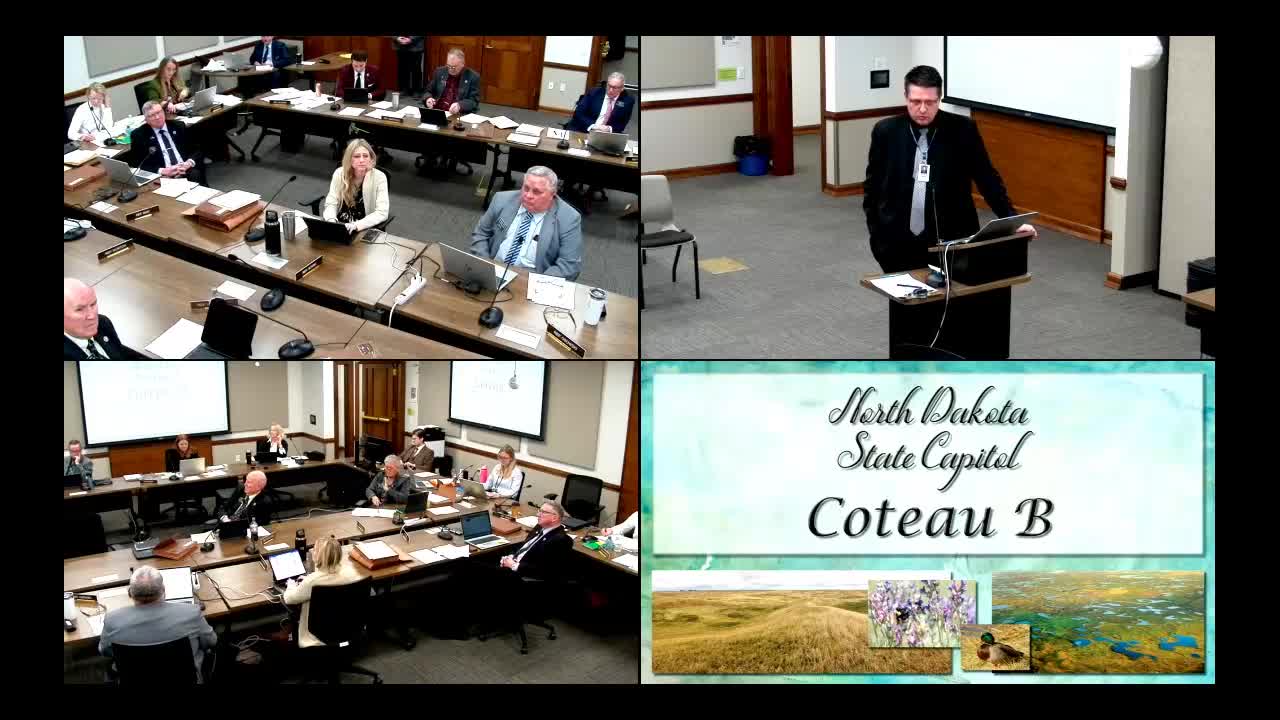House Bill 1172 sparks debate over funding and access to online education in North Dakota
January 22, 2025 | Education, House of Representatives, Legislative, North Dakota
This article was created by AI summarizing key points discussed. AI makes mistakes, so for full details and context, please refer to the video of the full meeting. Please report any errors so we can fix them. Report an error »

In a recent meeting of the North Dakota House Education Committee, educators and administrators gathered to discuss House Bill 1172, a proposed legislation that aims to reshape the funding and approval processes for distance education courses in the state. The atmosphere was charged with a mix of concern and hope as stakeholders voiced their opinions on the implications of the bill for students, schools, and the broader educational landscape.
At the heart of the discussion was the need for clarity in the approval process for students wishing to enroll in courses offered by the North Dakota Center for Distance Education (NDCDE). Several principals emphasized the importance of establishing guiding principles that would help determine when a request for distance education should be approved or denied. They highlighted the necessity of a balanced approach, especially in smaller districts where decision-making often rests with just a few individuals. The idea of creating a tribunal-like structure, involving multiple voices in the decision-making process, was proposed to ensure fairness and transparency.
The financial implications of the bill were a significant concern. Testimonies revealed that many students were enrolling in NDCDE courses that duplicated offerings already available in their schools, leading to substantial costs for districts. One principal noted that last year alone, his school incurred over $100,000 in expenses due to students opting for online courses instead of attending in-person classes. This trend raised questions about the efficient use of taxpayer dollars and the potential for financial strain on school budgets.
As the conversation unfolded, the committee members sought to understand the reasons behind students' choices to enroll in distance education. Many students cited personal preferences or scheduling conflicts as their reasons for opting out of traditional classes. However, educators expressed concern that some of these decisions were not academically driven, which could undermine the integrity of the educational system.
The meeting also touched on the challenges faced by students who struggle with traditional classroom settings. Some educators advocated for flexibility in the legislation to accommodate students with unique needs, such as those with social anxiety or medical issues. They argued that a one-size-fits-all approach could inadvertently exclude vulnerable students from receiving the support they require.
In closing, the committee members acknowledged the need for collaboration between schools and the NDCDE to address the concerns raised during the meeting. The discussions highlighted the delicate balance between providing students with educational choices and ensuring that those choices do not come at the expense of the quality and sustainability of local school programs. As the committee prepares to move forward with House Bill 1172, the implications of their decisions will undoubtedly resonate throughout North Dakota's educational landscape for years to come.
At the heart of the discussion was the need for clarity in the approval process for students wishing to enroll in courses offered by the North Dakota Center for Distance Education (NDCDE). Several principals emphasized the importance of establishing guiding principles that would help determine when a request for distance education should be approved or denied. They highlighted the necessity of a balanced approach, especially in smaller districts where decision-making often rests with just a few individuals. The idea of creating a tribunal-like structure, involving multiple voices in the decision-making process, was proposed to ensure fairness and transparency.
The financial implications of the bill were a significant concern. Testimonies revealed that many students were enrolling in NDCDE courses that duplicated offerings already available in their schools, leading to substantial costs for districts. One principal noted that last year alone, his school incurred over $100,000 in expenses due to students opting for online courses instead of attending in-person classes. This trend raised questions about the efficient use of taxpayer dollars and the potential for financial strain on school budgets.
As the conversation unfolded, the committee members sought to understand the reasons behind students' choices to enroll in distance education. Many students cited personal preferences or scheduling conflicts as their reasons for opting out of traditional classes. However, educators expressed concern that some of these decisions were not academically driven, which could undermine the integrity of the educational system.
The meeting also touched on the challenges faced by students who struggle with traditional classroom settings. Some educators advocated for flexibility in the legislation to accommodate students with unique needs, such as those with social anxiety or medical issues. They argued that a one-size-fits-all approach could inadvertently exclude vulnerable students from receiving the support they require.
In closing, the committee members acknowledged the need for collaboration between schools and the NDCDE to address the concerns raised during the meeting. The discussions highlighted the delicate balance between providing students with educational choices and ensuring that those choices do not come at the expense of the quality and sustainability of local school programs. As the committee prepares to move forward with House Bill 1172, the implications of their decisions will undoubtedly resonate throughout North Dakota's educational landscape for years to come.
View full meeting
This article is based on a recent meeting—watch the full video and explore the complete transcript for deeper insights into the discussion.
View full meeting
